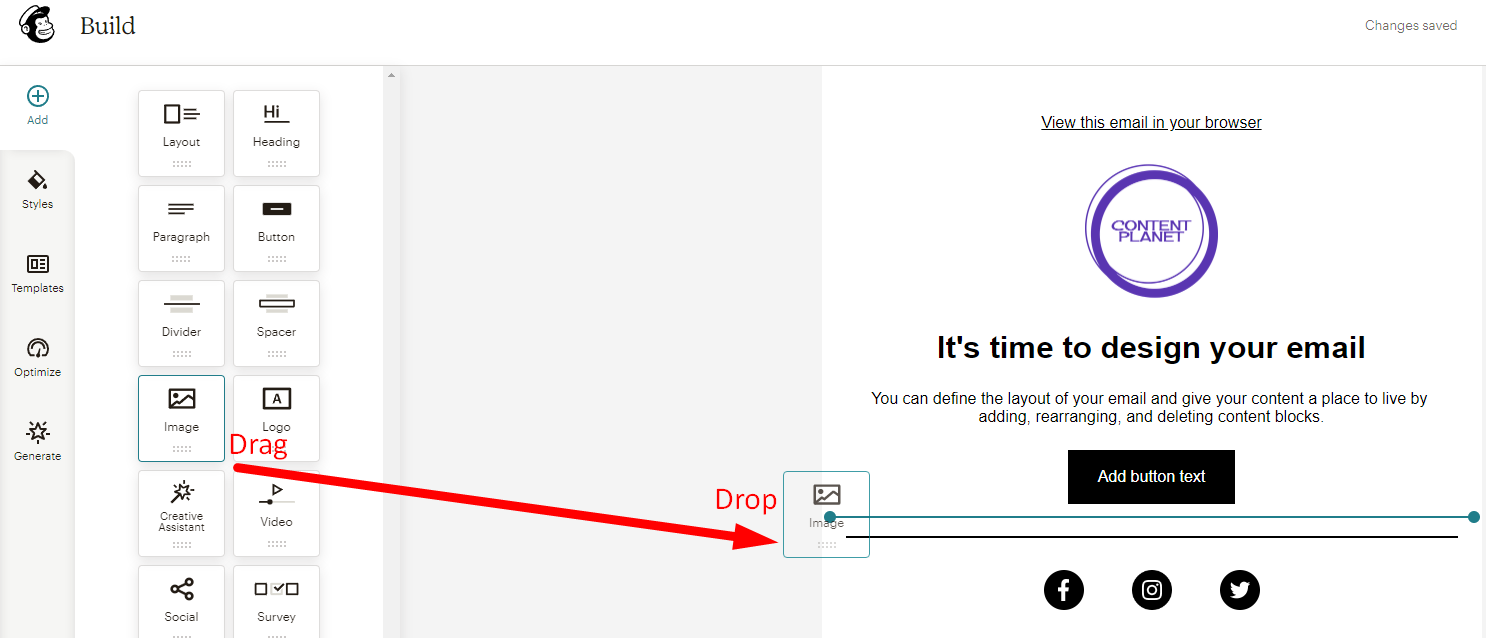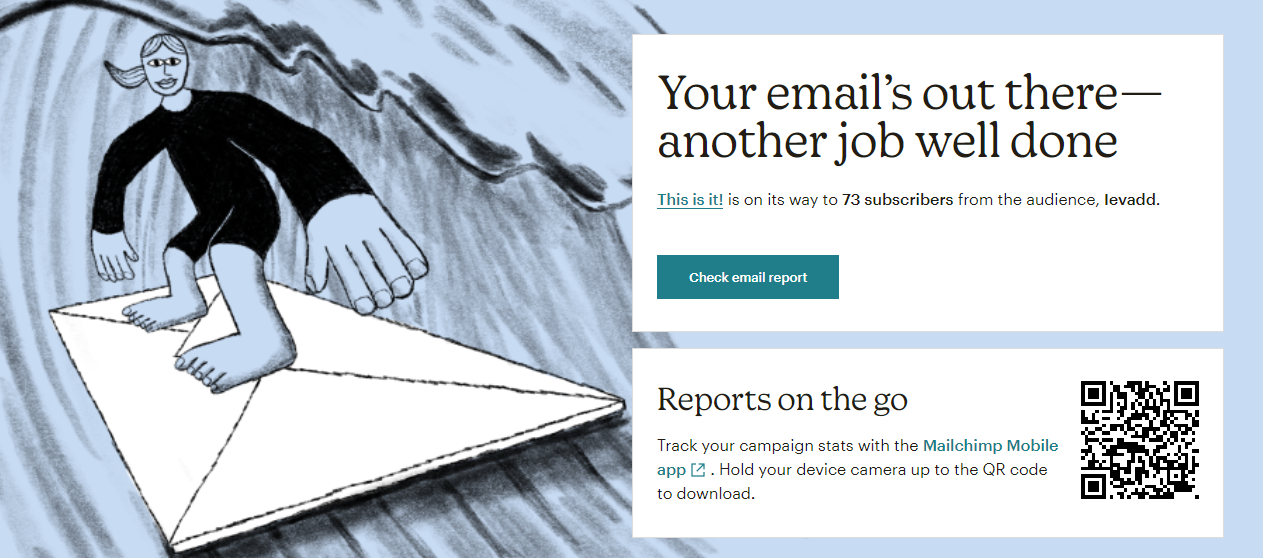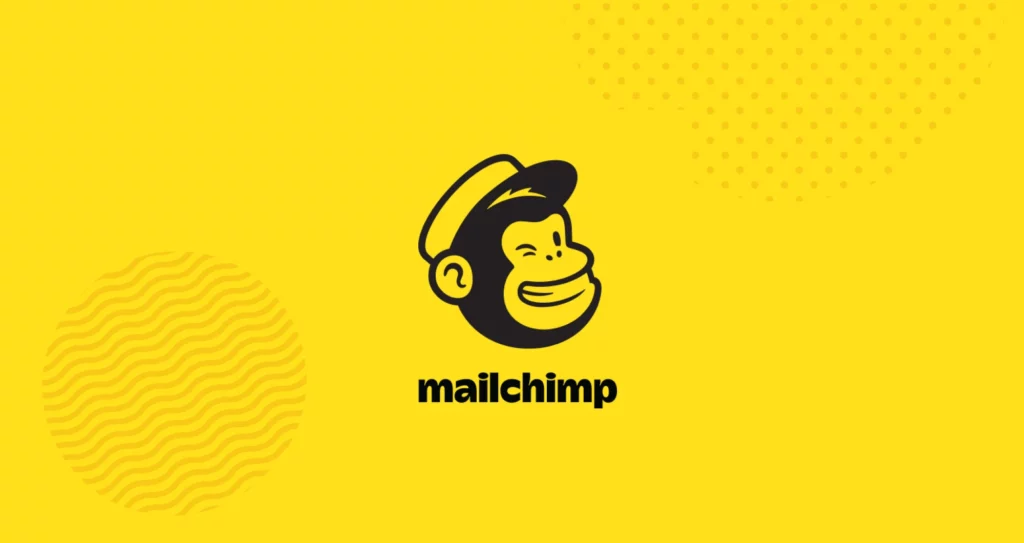Mailchimp is one of the biggest names in the email marketing industry – and for a good reason. It’s obvious that a lot of thought has gone into making the platform easy to use, making it an ideal choice if you need a quick way to set up successful email marketing campaigns. It’s a well-rounded tool that performs consistently well on most fronts. After signing up, I was able to import my contacts, create my first email, and send it to my subscribers in less than an hour. If you’re new to email marketing, you can take advantage of Mailchimp’s generous free plan to send emails, create forms, and craft an unlimited number of landing pages. More advanced personalization, segmentation, and automation tools are unlocked with Mailchimp’s paid plans. Mailchimp’s features might not be as powerful as those of other top competitors, but its email marketing tools are highly functional, easy on the eye, and a pleasure to use. Read on to find out whether Mailchimp is the right EMS for you.
Mailchimp Offers More Than Enough for the Average Marketer
Mailchimp’s set of features isn’t extraordinary, but I love how everything comes together seamlessly. From the simple email editor to the automation “journey” builder, everything looks good and makes sense.
Sure, it might not be as feature packed or powerful as some competitors, but it gets the job done – without giving you a headache. If you’ve never used an email marketing service before, Mailchimp’s a great place to start.
Email Campaigns, Templates & Personalization

Let’s start with the bad news: Mailchimp only has 6 pre-built templates and 5 more available for free in the “template marketplace.”
There are about 40 more templates available for purchase, ranging from $6.99 to $14.99. But considering I’d already paid $17.00 for the Standard plan to unlock the template marketplace, this struck me as bizarre.
The additional templates looked great – highly customizable and mobile responsive – but charging extra isn’t the industry standard. For comparison, ActiveCampaign’s 250+ high-quality templates are available at no additional cost.
Still, I’m glad I didn’t let that hiccup discourage me, because Mailchimp does get many other things right. Mailchimp recently revamped its email editor, making it even easier to use. You can use merge tags to personalize your email with just a few clicks, and dynamic content allows you to display different content to specific audiences.
Mailchimp also offers extensive A/B testing, allowing you to test and optimize variations of subject lines, sender name, send time, and content.
Mailing Lists and Segmentation
You can easily import your contacts by uploading a CSV or TXT file, copying/pasting, or using a third-party service like Zapier, Salesforce, and QuickBooks. Mailchimp’s warning about importing contacts you have permission to market to is a good indicator of a solid anti-spam policy.
Segmentation is all about organizing your mailing list based on who your subscribers are, so that you can create more targeted campaigns. While Mailchimp does have tags (such as opened, clicked) to help you organize your contacts, it only offers advanced segmentation with the Premium plan (and that’ll cost you).
Effectively, this means you won’t be able to move contacts between lists – Mailchimp’s audiences are siloed. But it’s not all bad news. Mailchimp’s predictive segmentation feature does a decent job of analyzing data for you. It can then use that data to automatically deliver your emails to the right people.

Unlike most of its competitors, Mailchimp allows users to create and publish unlimited landing pages for free. There are 9 fully customizable templates available, and they all look modern with sleek/ minimalistic designs.
Like with the email editor, each template consists of blocks that you can edit. You can also then drag and drop elements to customize your page.
All of Mailchimp’s landing page templates are mobile responsive, and you can enter desktop/mobile preview mode with the click of a button. It took me less than 10 minutes to create a landing page I’d be happy to share with my subscribers.
Unfortunately, connecting your page to a custom domain is only possible with a Websites & Commerce plan – which costs extra.
Automation
Mailchimp offers around 45 pre-built automations (or “journeys”) to help you engage your audience. You can set up simple welcome emails, send offers to users who’ve abandoned their carts, promote cross-sell opportunities, and more. You can also create your own “journey” by specifying rules, actions, and conditions.
Here’s the caveat: Mailchimp doesn’t allow contacts to move freely between lists, so its automation capabilities are somewhat limited, especially compared to the likes of ActiveCampaign.
But that’s not necessarily a dealbreaker. Mailchimp markets itself as a user-friendly, easy-to-use EMS – so it makes sense that it keeps its automation simple and manageable for the average user. If that’s you, this shouldn’t keep you from picking Mailchimp.
Your Emails Will Likely Reach Their Destination

There’s a lot of discussion around deliverability, yet I see people making the same mistake over and over again. They run some quick tests, come up with an arbitrary delivery rate (say, 87%), and call it a day.
That’s not how we measure deliverability here at Website . Why? Well, when running the usual deliverability tests, you introduce too many variables, so your results can’t be replicated. The best we can do is examine certain features that can improve the odds of our emails reaching their destination.
Mailchimp’s deliverability score is a reflection of the presence (or absence) of these features, especially in comparison to similar features offered by competitors.
First, I checked to see whether Mailchimp offers DKIM authentication. Long story short, DKIM authentication gives email providers (like Gmail or Hotmail) a way to tell whether the emails sent in your name really do come from you – it’s an email signature of sorts. Mailchimp offers DKIM authentication, plus a helpful article that can help you set it up in just a few minutes.
Next, I looked at Mailchimp’s anti-spam policy. Ideally, you want your EMS to be as strict as possible regarding spam – a bad reputation affects the platform’s deliverability rate as a whole. Luckily, Mailchimp has strict anti-spam requirements that comply with the U.S. CAN-SPAM Act.
That said, Mailchimp didn’t blink an eye when I imported several spammy-looking contacts, which did affect the final deliverability score I awarded it.
Affiliate marketing can also negatively affect a service’s deliverability rate. Mailchimp doesn’t allow traditional affiliate marketing schemes (such as generating leads or sales for a third party), but it does allow affiliate links (i.e., a partnership between two independent businesses).
Lastly, I wanted to know whether Mailchimp offers private (or dedicated) IP addresses. A private IP means you don’t have to send emails from the same domain as other users on the platform, which can boost your deliverability rate.
Mailchimp offers private IPs for an additional monthly fee of $29.95. That’s a seriously reasonable price – other EMS charge hundreds of dollars for this. And unlike most competitors, Mailchimp doesn’t require that you send hundreds of thousands of emails a day to qualify for a dedicated IP.
Mailchimp’s reports are pretty advanced, even if you’re on the free plan. The dashboard will quickly tell you how many subscribers opened, clicked, or bounced, as well as how many orders were made during the campaign’s lifecycle. Everything’s laid out beautifully and is easy to read – exactly what I expected from Mailchimp.
Mailchimp also allows you to dive deeper into your campaign performance. There’s a section dedicated to links and click data, with a 24-hour performance chart that tracks clicks and opens in real time. Social performance and top geographical locations by opens are also available through the dashboard.
If you’re a Standard or Plus user, you can check how your campaigns have performed against each other through the “Email Analytics” section under “Campaigns.” All users also have access to “Campaign Benchmarking,” which compares your email performance with that of your competitors.
There’s no such thing as too much data, and based on my testing, Mailchimp knows that well!
Mailchimp offers four tiers of service, including a free-forever plan. The free plan gives you the basic tools you need to create email campaigns and manage a small audience, but it’s pretty limited in terms of personalization, automation, and support.
The Essentials plan is the cheapest paid option, and it unlocks some of the platform’s core features (A/B testing and email scheduling). I’m not a fan of the Essentials plan because many advanced features (custom templates, dynamic content, send-time optimization) that you need to make your email campaigns shine are locked behind the Standard plan.
If you’re willing to upgrade to a paid plan, you might as well spend a few more dollars and grab yourself the superior Standard plan – it’s worth it.
And what about the Premium plan? While this does come with some useful additions (like phone support), the huge bump in price puts it out of reach for the average marketer. Unless you need the extra 145,000 email sends/month, you’re better off sticking to the Standard plan.
Some of Mailchimp’s add-ons (like dedicated IPs) make sense, but I still don’t love the fact that I have to pay extra to access premium templates and connect my custom domain when I’m already a paying customer. Other competitors, such as ActiveCampaign, include these features with their paid plans.
Mailchimp’s one of the most user-friendly EMS I’ve tested so far. It can help guide new marketers through the process of creating and managing contacts, crafting impactful emails, and analyzing their performance. The paid plans come with clever tools (such as predictive segmentation and content optimizer) that more advanced users will appreciate.
Mailchimp recently updated its email editor, and it’s now even more intuitive than it was before. I like how I can log into Mailchimp, work on my emails, and still have plenty of time left to do other things before lunchtime.
Sure, Mailchimp’s pricing models don’t always make sense, and its customer support isn’t exactly award-worthy if you’re on the free plan. But if you just want to manage your contacts and send emails without getting a headache, Mailchimp might be the right choice for you.

